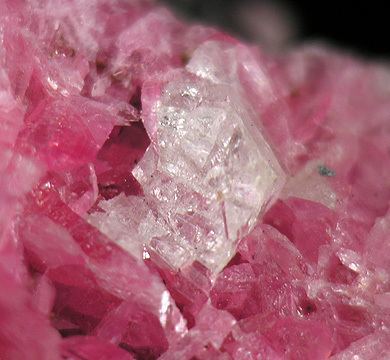Category Borate minerals Strunz classification 6.AC.70 Space group I4 | Formula(repeating unit) Ca2B[AsO4](OH)4 Crystal system Tetragonal | |
 | ||
Crystal class Disphenoidal (4)(same H-M symbol) | ||
Cahnite (Cahnit in German, Cahnita in Spanish, Канит in Russian) is a brittle white or colorless mineral that has perfect cleavage and is usually transparent. It usually forms tetragonal-shaped crystals and it has a hardness of 3 mohs. Cahnite was discovered in the year 1921. It was named Cahnite to honor Lazard Cahn (1865–1940), who was a mineral collector and dealer. It is usually found in the Franklin Mine, in Franklin, New Jersey. Until the year 2002, when a sample of cahnite was found in Japan, that was the only known place that cahnite was located. The geological environment that it occurs in is in pegmatites cutting a changed zinc orebody. The chemical formula for cahnite is Ca2B[AsO4](OH)4. It is made up of 26.91% calcium, 3.63% boron, 25.15% arsenic, 1.35% hydrogen, and 42.96% oxygen. It has a molecular weight of 297.91 grams. Cahnite is not radioactive. Cahnite is associated with these other minerals: willemite, rhodonite, pyrochroite, hedyphane, datolite, and baryte.
